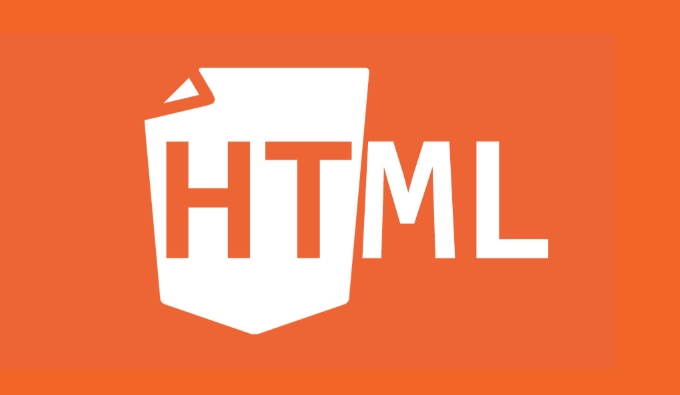To debug H5 page problems, you need to use the browser DevTools to multi-dimensional troubleshooting. 1. Use the device simulator to switch screen size, DPR and network conditions to initially reproduce mobile problems; 2. View and modify DOM structure and style through the Elements panel to troubleshoot layout abnormalities or element occlusions; 3. Use the Network panel to analyze interface response time, resource size and loading performance, optimize pictures and merge files; 4. Set breakpoints in the Sources panel or use debugger to debug JS behavior, combining console.table and performance.now() to assist troubleshooting and performance measurement.

Sometimes the problem of debugging H5 pages is more complicated than expected. The page looks fine, but it performs abnormally on some devices or browsers. At this time, it is no longer enough to just print logs. You need to use the browser's developer tools (DevTools) to conduct in-depth investigation.

Simulate mobile environment debugging
The H5 page is mainly for mobile users, and you may not see any problems when viewing directly in the PC browser. Use DevTools' Device Simulator to quickly switch different screen sizes, DPRs, and even network conditions.
- Click the "Switch Device Toolbar" button in the upper left corner of DevTools
- Choose a common phone model, such as iPhone 13 or Nexus 5
- You can set network speed limit (Slow 3G), test loading performance and resource request status
Note: Some behaviors are only completely consistent with the real machine, such as layout changes when the soft keyboard pops up, touch event triggering, etc. The simulator is just an auxiliary means.

View and modify DOM and styles
Is the page rendering abnormal? It may be that the style is overwritten, the DOM structure is wrong, or the flex layout is not effective. DevTools' Elements panel allows you to view and modify DOM and CSS in real time.
- After clicking on the element, the style rules of the currently applied will be displayed on the right.
- You can temporarily check/cancel the style item and observe changes
- After modifying HTML content, you can see the effect. There is no need to refresh
For example, if you find that a button click is invalid, you can check whether it is blocked by a transparent layer, or whether pointer-events: none has been added by mistake.

Analyze network request and loading performance
H5 page loading slow? The picture is too big? Interface timeout? Network panels can help you find bottlenecks.
- Open the Network panel, refresh the page, and you can see the list of all requests
- Check the size, time, status code of each request
- Click on the specific request to see the request header, response content, and loading time waterfall diagram
It is recommended to pay attention to the following points:
- Interface response time exceeds 500ms and needs optimization
- Try to control the picture to within 100KB, and use WebP format first.
- Merge JS/CSS files to reduce the number of requests
In addition, you can also enable the "Disable Cache" option to ensure that every load is a real request.
Debugging JavaScript behavior
Page interaction errors, script errors, asynchronous callbacks are not executed... These are all inseparable from JS debugging. The Sources panel provides breakpoint debugging capabilities.
- Click Add Breakpoint on the left side of the code line number
- After the operation is triggered, the code will pause at the breakpoint.
- View call stack, variable values, and step-by-step execution
If you encounter asynchronous logic problems, you can enter a debugger statement in the DevTools console, which can also trigger a breakpoint.
Tips: Use console.table() to output array data, with a clearer structure; performance.now() can be used to measure the time-consuming code execution.
Basically that's it. Mastering these DevTools techniques will improve the efficiency of debugging H5 pages. Many seemingly strange problems can actually be seen by opening the developer tools.
The above is the detailed content of Advanced H5 Debugging with Browser Developer Tools. For more information, please follow other related articles on the PHP Chinese website!

Hot AI Tools

Undress AI Tool
Undress images for free

Undresser.AI Undress
AI-powered app for creating realistic nude photos

AI Clothes Remover
Online AI tool for removing clothes from photos.

Clothoff.io
AI clothes remover

Video Face Swap
Swap faces in any video effortlessly with our completely free AI face swap tool!

Hot Article

Hot Tools

Notepad++7.3.1
Easy-to-use and free code editor

SublimeText3 Chinese version
Chinese version, very easy to use

Zend Studio 13.0.1
Powerful PHP integrated development environment

Dreamweaver CS6
Visual web development tools

SublimeText3 Mac version
God-level code editing software (SublimeText3)

Hot Topics
 Adding drag and drop functionality using the HTML5 Drag and Drop API.
Jul 05, 2025 am 02:43 AM
Adding drag and drop functionality using the HTML5 Drag and Drop API.
Jul 05, 2025 am 02:43 AM
The way to add drag and drop functionality to a web page is to use HTML5's DragandDrop API, which is natively supported without additional libraries. The specific steps are as follows: 1. Set the element draggable="true" to enable drag; 2. Listen to dragstart, dragover, drop and dragend events; 3. Set data in dragstart, block default behavior in dragover, and handle logic in drop. In addition, element movement can be achieved through appendChild and file upload can be achieved through e.dataTransfer.files. Note: preventDefault must be called
 Handling reconnections and errors with HTML5 Server-Sent Events.
Jul 03, 2025 am 02:28 AM
Handling reconnections and errors with HTML5 Server-Sent Events.
Jul 03, 2025 am 02:28 AM
When using HTML5SSE, the methods to deal with reconnection and errors include: 1. Understand the default reconnection mechanism. EventSource retrys 3 seconds after the connection is interrupted by default. You can customize the interval through the retry field; 2. Listen to the error event to deal with connection failure or parsing errors, distinguish error types and execute corresponding logic, such as network problems relying on automatic reconnection, server errors manually delay reconnection, and authentication failure refresh token; 3. Actively control the reconnection logic, such as manually closing and rebuilding the connection, setting the maximum number of retry times, combining navigator.onLine to judge network status to optimize the retry strategy. These measures can improve application stability and user experience.
 Getting user location with HTML5 geolocation API
Jul 04, 2025 am 02:03 AM
Getting user location with HTML5 geolocation API
Jul 04, 2025 am 02:03 AM
To call GeolocationAPI, you need to use the navigator.geolocation.getCurrentPosition() method, and pay attention to permissions, environment and configuration. First check whether the browser supports API, and then call getCurrentPosition to obtain location information; the user needs to authorize access to the location; the deployment environment should be HTTPS; the accuracy or timeout can be improved through configuration items; the mobile behavior may be limited by device settings; the error type can be identified through error.code and given corresponding prompts in the failed callback to improve user experience and functional stability.
 Understanding the autoplay policy changes affecting HTML5 video.
Jul 03, 2025 am 02:34 AM
Understanding the autoplay policy changes affecting HTML5 video.
Jul 03, 2025 am 02:34 AM
The core reason why browsers restrict the automatic playback of HTML5 videos is to improve the user experience and prevent unauthorized sound playback and resource consumption. The main strategies include: 1. When there is no user interaction, audio automatic playback is prohibited by default; 2. Allow mute automatic playback; 3. Audio videos must be played after the user clicks. The methods to achieve compatibility include: setting muted properties, mute first and then play in JS, and waiting for user interaction before playing. Browsers such as Chrome and Safari perform slightly differently on this strategy, but the overall trend is consistent. Developers can optimize the experience by first mute playback and provide an unmute button, monitoring user clicks, and handling playback exceptions. These restrictions are particularly strict on mobile devices, with the aim of avoiding unexpected traffic consumption and multiple videos
 Using ARIA attributes with HTML5 semantic elements for accessibility
Jul 07, 2025 am 02:54 AM
Using ARIA attributes with HTML5 semantic elements for accessibility
Jul 07, 2025 am 02:54 AM
The reason why ARIA and HTML5 semantic tags are needed is that although HTML5 semantic elements have accessibility meanings, ARIA can supplement semantics and enhance auxiliary technology recognition capabilities. For example, when legacy browsers lack support, components without native tags (such as modal boxes), and state updates need to be dynamically updated, ARIA provides finer granular control. HTML5 elements such as nav, main, aside correspond to ARIArole by default, and do not need to be added manually unless the default behavior needs to be overridden. The situations where ARIA should be added include: 1. Supplement the missing status information, such as using aria-expanded to represent the button expansion/collapse status; 2. Add semantic roles to non-semantic tags, such as using div role to implement tabs and match them
 Securing HTML5 web applications against common vulnerabilities
Jul 05, 2025 am 02:48 AM
Securing HTML5 web applications against common vulnerabilities
Jul 05, 2025 am 02:48 AM
The security risks of HTML5 applications need to be paid attention to in front-end development, mainly including XSS attacks, interface security and third-party library risks. 1. Prevent XSS: Escape user input, use textContent, CSP header, input verification, avoid eval() and direct execution of JSON; 2. Protect interface: Use CSRFToken, SameSiteCookie policies, request frequency limits, and sensitive information to encrypt transmission; 3. Secure use of third-party libraries: periodic audit dependencies, use stable versions, reduce external resources, enable SRI verification, ensure that security lines have been built from the early stage of development.
 Integrating CSS and JavaScript effectively with HTML5 structure.
Jul 12, 2025 am 03:01 AM
Integrating CSS and JavaScript effectively with HTML5 structure.
Jul 12, 2025 am 03:01 AM
HTML5, CSS and JavaScript should be efficiently combined with semantic tags, reasonable loading order and decoupling design. 1. Use HTML5 semantic tags, such as improving structural clarity and maintainability, which is conducive to SEO and barrier-free access; 2. CSS should be placed in, use external files and split by module to avoid inline styles and delayed loading problems; 3. JavaScript is recommended to be introduced in front, and use defer or async to load asynchronously to avoid blocking rendering; 4. Reduce strong dependence between the three, drive behavior through data-* attributes and class name control status, and improve collaboration efficiency through unified naming specifications. These methods can effectively optimize page performance and collaborate with teams.
 Declaring the correct HTML5 doctype for modern pages.
Jul 03, 2025 am 02:35 AM
Declaring the correct HTML5 doctype for modern pages.
Jul 03, 2025 am 02:35 AM
Doctype is a statement that tells the browser which HTML standard to use to parse the page. Modern web pages only need to be written at the beginning of the HTML file. Its function is to ensure that the browser renders the page in standard mode rather than weird mode, and must be located on the first line, with no spaces or comments in front of it; there is only one correct way to write it, and it is not recommended to use old versions or other variants; other such as charset, viewport, etc. should be placed in part.






